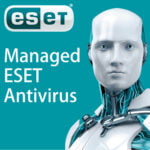Issue
- Supported versions
- Install Amazon Corretto 8 (JDK)
- Migrate your existing ESMC / ESET PROTECT Web Console to use JDK
- Migration scenario for Tomcat version 7.0.90 and higher
- Migration scenario for Tomcat version 7.0.88 and lower
Details
- Starting January 2019, Oracle JAVA SE 8 public updates for business, commercial, or production use require a commercial license
- If you do not purchase a JAVA SE subscription, you can use this guide to transition to a no-cost alternative
- Only installations on Windows are affected
- Starting version 8, ESET Security Management Center is rebranded to ESET PROTECT
Solution
Supported versions
- Apache Tomcat:
- 9.x (ESMC 7.1, 7.2, PROTECT 8.0). We recommend that you install the latest Apache Tomcat 9.x.
- 7.0.90 and 7.0.92 (ESMC 7.0).
- JDK:
- Only LTS versions are supported.
- JDK 11 (LTS) – Oracle account is required to download the installer.
- No-cost alternative options:
- Amazon Corretto 8 and 11 – See the installation instructions below.
- OpenJDK 11 (LTS) – Use the
.msiinstaller and include the Set JAVA_HOME variable feature to ensure that the path to the JAVA environment gets wp-signup.phped in Windows.
If you have multiple Java versions installed on your system, we recommend that you uninstall the earlier Java versions and only keep the latest one.
Make sure that Java, ESMC or ESET PROTECT, and Apache Tomcat have the same bitness (32-bit or 64-bit for ESMC 7.0 and 64-bit for later versions).
I am installing the ESET PROTECT Server from an All-in-one installer.
Install Amazon Corretto 8 (JDK)
- Download a Windows
.msifile from the Downloads page. - Double-click the
.msifile to start the Installation Wizard. - Follow the steps in the wizard.
You have the option of setting a custom installation path. By default, Amazon Corretto 8 is installed at C:\Program Files\Amazon Corretto\. If you set a custom path, make a note of it for the next step.
- When the Installation Wizard is finished, set the
JAVA_HOMEandPATHenvironment variables.
Set JAVA_HOME to the installation location, noting that the directory contains the currently installed version. For example, if the default directory is used for 8u242, then set JAVA_HOME as C:\Program Files\Amazon Corretto\jdk1.8.0_242.
Add %JAVA_HOME%\bin to the current PATH variable.
- Verify the installation by running
java -versionin a command prompt. You should see the following output.
openjdk version "1.8.0_242"
OpenJDK Runtime Environment Corretto-8.242.07.1 (build 1.8.0_242-b07)
OpenJDK 64-Bit Server VM Corretto-8.242.07.1 (build 25.242-b07, mixed mode)Migrate your existing ESMC / ESET PROTECT Web Console to use JDK
You can migrate your existing Web Console from Oracle Java JDK to an alternative one. Choose one of the migration scenarios below based on your current Apache Tomcat version.
Migration scenario for Tomcat version 7.0.90 and higher
This migration scenario does not require the re-install of Apache Tomcat.
- Navigate to the Apache Tomcat location (for example,
C:\Program Files\Apache Software Foundation\Tomcat 7.0\bin\Tomcat7w.exe) - In the Apache Tomcat 7 Properties window, navigate to the General tab and click on the Stop button to stop the Apache Tomcat service.
- Uninstall your current JDK.
- Install your desired JDK.
- Go back to the Apache Tomcat Properties window and navigate to the Java tab.
- Under Java Virtual Machine path select the correct path to the jvm.dll file based on the JDK. (for example for Amazon Corretto,
C:\Program Files\Amazon Corretto\jdk11.0.7\bin\jvm.dll) - Go back to the General tab, and click Start to start the Apache Tomcat service.
- Verify that you can log in to your Web Console.
Migration scenario for Tomcat version 7.0.88 and lower
This migration scenario requires the re-install of Apache Tomcat.
- Back up the necessary files:
C:\Program Files\Apache Software Foundation\Tomcat 7.0\.keystore
C:\Program Files\Apache Software Foundation\Tomcat 7.0\conf\Server.xml
C:\Program Files\Apache Software Foundation\Tomcat 7.0\conf\Tomcat-users.xml
C:\Program Files\Apache Software Foundation\Tomcat 7.0\conf\Serverinfo.properties
C:\Program Files\Apache Software Foundation\Tomcat 7.0\webapps\era\WEB-INF\classes\sk\eset\era\g2webconsole\server\modules\config\EraWebServerConfig.properties - Download and run the JDK installer.
- To change which JDKis used by Apache Tomcat, you need to reinstall the Apache Tomcat.
- If you are running more than Web Console on your instance of Apache Tomcat, we recommend that you check the official Apache Tomcat upgrade/migration documentation.
- If you use a custom SSL certificate store in the Tomcat folder, back up the certificate.
- Uninstall the current version of Apache Tomcat.
- Delete the following folder if it is still present on your system:
C:\Program Files\Apache Software Foundation\Tomcat 7. - Run the Apache Tomcat installer from the ESET PROTECT All In One installers folder. During the installation, select the path to your JDK you intend to use instead of the Java SE. (for example,
C:\Program Files\Amazon Corretto\jre8). - When you are finished, deselect the check box next to Run Apache Tomcat.
- Verify that the Apache Tomcat Service is not running.
- Copy the era.war file from the installers folder to the Apache Tomcat web applications folder: click Start → Apache Tomcat → Tomcat Program Directory and open the webapps folder (on most Windows operating systems –
C:\Program Files\Apache Software Foundation\Tomcat 7.0\webapps - Allow a few minutes for the file extraction and Web Console installation. The installation will run silently but you can verify a successful installation by the presence of the era folder inside the webapps folder.
- If you run the Web Console (Apache Tomcat) on a different computer than the Server component, restore the backed up
EraWebServerConfig.propertiesfile to its original location. - Verify that the Apache Tomcat is using the JDK you selected. To do so, click Start → All Programs → Apache Tomcat → Monitor Tomcat. In the Java tab under Java Virtual Machine, there should be the path to the JDK you selected.
- You can now start the Apache Tomcat service and verify that the web console is running without any issues.

